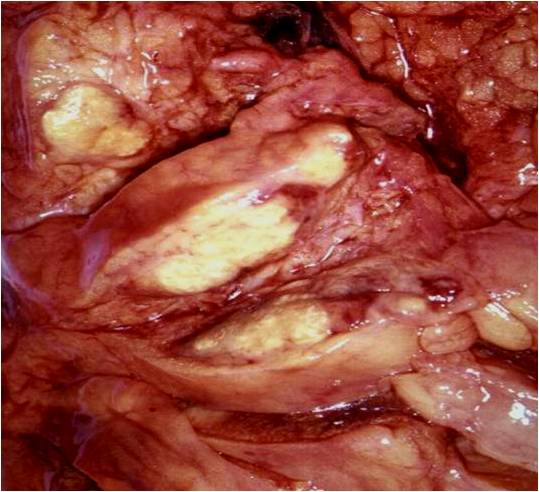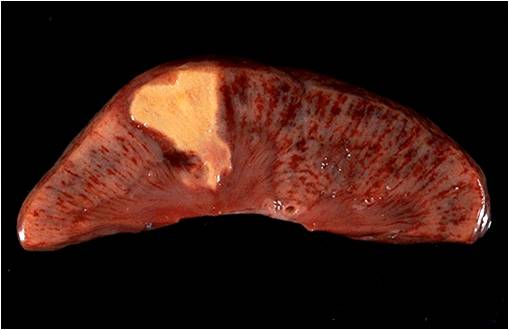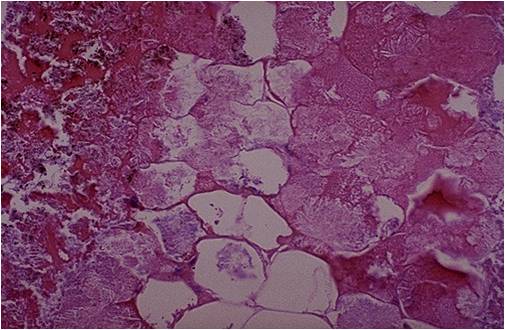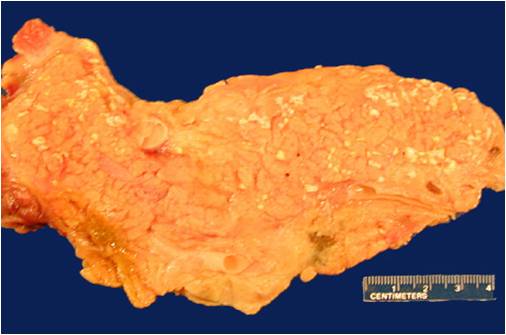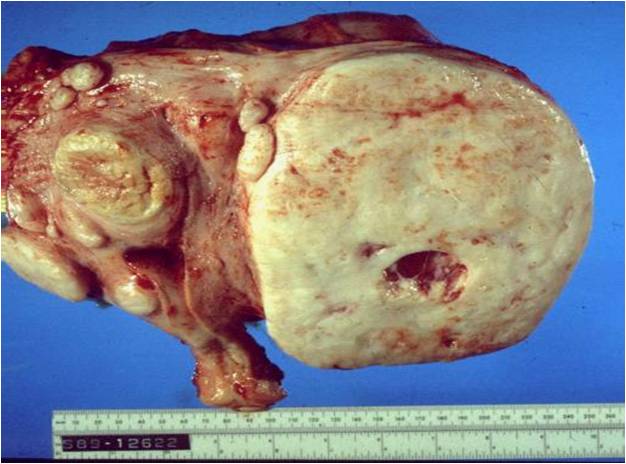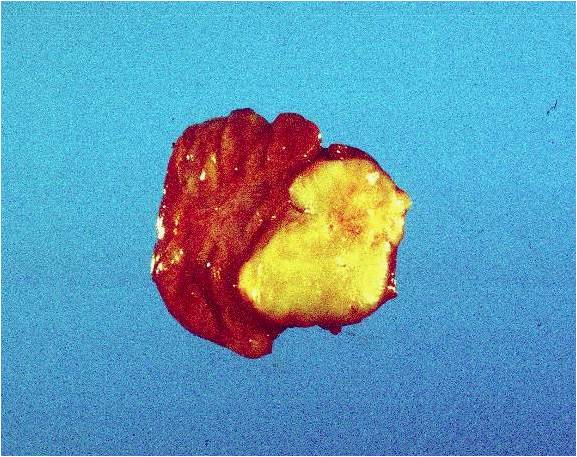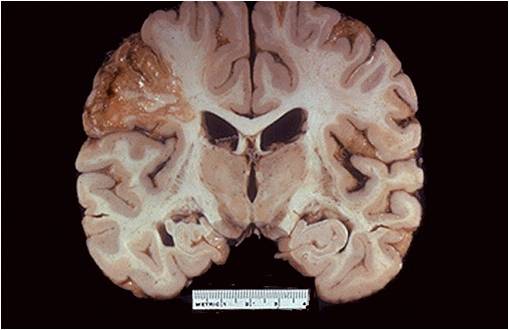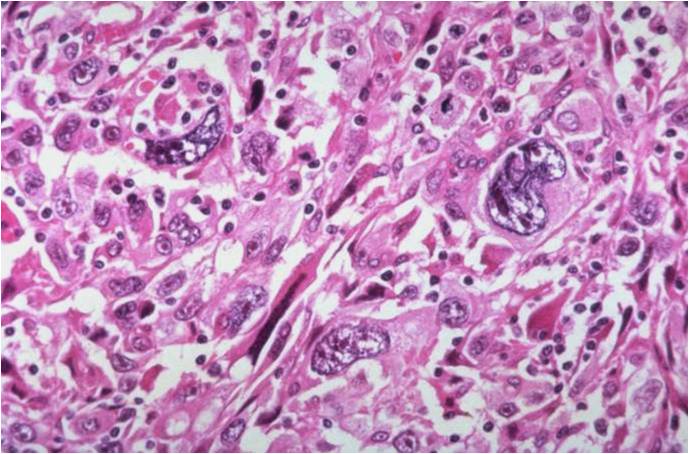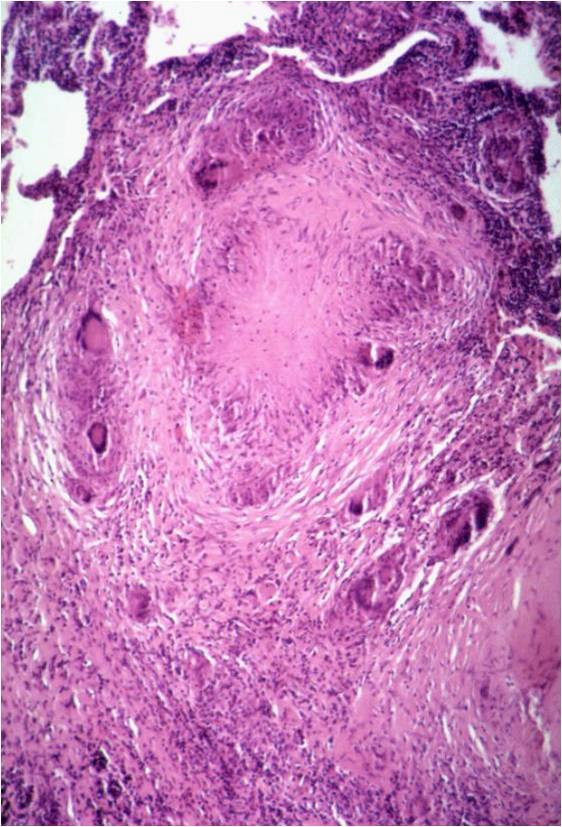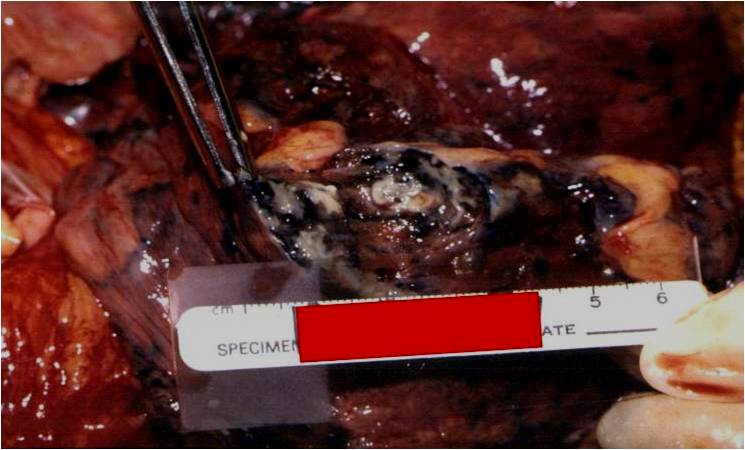First Patho Quiz
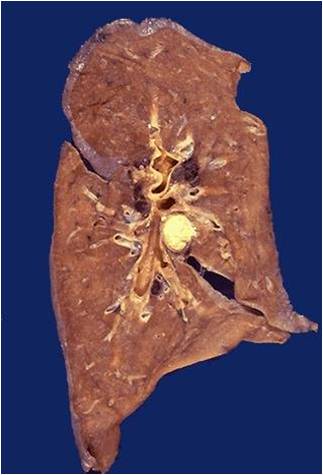
Intro from Cell Adaptations to Hemodynamic disorders
- 1.
What is Serous Inflammation characterized by?
- A.
The mildest form of inflammation, characterized by exudation of fluid (mostly albumin), a clear- like serum. (i.e. early stages of pneumonia)
- B.
Severe inflammation, characterized by fibrinous exudate, occurs in larger vascular tissue, seen in bacterial infections (pericarditis)
- C.
Inflammation caused by pus-forming bacteria, such as Staph or Strep. Pus may accumulate on mucous, skin, or internal organs (bacterial meningitis)
- D.
Inflammation of body surfaces of mucosa and hollow organs (stomach or intestines) or a loss of epithelial lining
- E.
Inflammation characterized by exudate of fibrin, pus, cell debris, and mucous form a pseudomembrane on the surface of ulcers
Correct Answer
A. The mildest form of inflammation, characterized by exudation of fluid (mostly albumin), a clear- like serum. (i.e. early stages of pneumonia) -
- 2.
Ulcerative inflammation?
- A.
Inflammation characterized by exudate of fibrin, pus, cell debris, and mucous form a pseudomembrane on the surface of ulcers
- B.
Inflammation caused by pus-forming bacteria, such as Staph or Strep. Pus may accumulate on mucous, skin, or internal organs (bacterial meningitis)
- C.
Inflammation of body surfaces of mucosa and hollow organs (stomach or intestines) or a loss of epithelial lining
- D.
Severe inflammation, characterized by fibrinous exudate, occurs in larger vascular tissue, seen in bacterial infections (pericarditis)
- E.
The mildest form of inflammation, characterized by exudation of fluid (mostly albumin), a clear- like serum. (i.e. early stages of pneumonia)
Correct Answer
C. Inflammation of body surfaces of mucosa and hollow organs (stomach or intestines) or a loss of epithelial lining -
- 3.
Purulent Inflammation?
- A.
Inflammation of body surfaces of mucosa and hollow organs (stomach or intestines) or a loss of epithelial lining
- B.
The mildest form of inflammation, characterized by exudation of fluid (mostly albumin), a clear- like serum. (i.e. early stages of pneumonia)
- C.
Inflammation characterized by exudate of fibrin, pus, cell debris, and mucous form a pseudomembrane on the surface of ulcers
- D.
Inflammation caused by pus-forming bacteria (dead or dying PMNs), such as Staph or Strep. Pus may accumulate on mucous, skin, or internal organs (bacterial meningitis)
- E.
Severe inflammation, characterized by fibrinous exudate, occurs in larger vascular tissue, seen in bacterial infections (pericarditis)
Correct Answer
D. Inflammation caused by pus-forming bacteria (dead or dying PMNs), such as Staph or Strep. Pus may accumulate on mucous, skin, or internal organs (bacterial meningitis) -
- 4.
Pseudomembranous Infammation?
- A.
Inflammation caused by pus-forming bacteria (dead or dying PMNs), such as Staph or Strep. Pus may accumulate on mucous, skin, or internal organs (bacterial meningitis)
- B.
Severe inflammation, characterized by fibrinous exudate, occurs in larger vascular tissue, seen in bacterial infections (pericarditis)
- C.
Inflammation characterized by exudate of fibrin, pus, cell debris, and mucous form a pseudomembrane on the surface of ulcers
- D.
Inflammation of body surfaces of mucosa and hollow organs (stomach or intestines) or a loss of epithelial lining
- E.
The mildest form of inflammation, characterized by exudation of fluid (mostly albumin), a clear- like serum. (i.e. early stages of pneumonia)
Correct Answer
C. Inflammation characterized by exudate of fibrin, pus, cell debris, and mucous form a pseudomembrane on the surface of ulcers -
- 5.
Fibrinous Inflammation?
- A.
Inflammation of body surfaces of mucosa and hollow organs (stomach or intestines) or a loss of epithelial lining
- B.
Severe inflammation, characterized by fibrinous exudate, occurs in larger vascular tissue, seen in bacterial infections (pericarditis)
- C.
Inflammation characterized by exudate of fibrin, pus, cell debris, and mucous form a pseudomembrane on the surface of ulcers
- D.
The mildest form of inflammation, characterized by exudation of fluid (mostly albumin), a clear- like serum. (i.e. early stages of pneumonia)
- E.
Inflammation caused by pus-forming bacteria (dead or dying PMNs), such as Staph or Strep. Pus may accumulate on mucous, skin, or internal organs (bacterial meningitis)
Correct Answer
B. Severe inflammation, characterized by fibrinous exudate, occurs in larger vascular tissue, seen in bacterial infections (pericarditis) -
- 6.
Chronic Inflammation is marked by what exudate contents?
- A.
Basophils, Neutrophils, Heparin
- B.
PMNs, fibrin, granulocytes
- C.
Fibrin, lymph, parenchymal cells
- D.
Neutrophils, macrophages, plasmin, fibrin
- E.
Lymph, macrophages, plasma cells
Correct Answer
E. Lymph, macrophages, plasma cellsExplanation
All of the contents of the exudate produced by chronic inflammation stimulate loss parenchymal cells and cause scarring, i.e. in fallopian tube scarringRate this question:
-
- 7.
Granulomatous Inflammation is caused by what?
- A.
Antigens that evoke a cell mediated hypersensitivity or antigens at the site
- B.
Viral induced inflammation
- C.
A secondary liquefaction of tissue due to an initial inflammation
- D.
Dead or dying PMNs
- E.
Prolonged inflammation and irritation to tissues
Correct Answer
A. Antigens that evoke a cell mediated hypersensitivity or antigens at the siteExplanation
Granulomatous reactions are mediated by macrophages and T-lymphocytes that accumulate at injury site. The macrophages interconnect form nodules, transform into epitheloid cells which are immmobile and act as chemical mediators for inflammationRate this question:
-
- 8.
The prototype for a Granulomatous disease is what?
- A.
Serous pleuritis
- B.
Ulceritive colitis
- C.
Tuberculosis
- D.
Acute bacterial meningitis
- E.
Pelvic inflammatory disease
Correct Answer
C. Tuberculosis -
- 9.
What is an a liquid emboli?
- A.
A bolus of fat that has entered veins (usually after fx)
- B.
A large piece of tissue that become necrotic, been released and enteres vascular system
- C.
A piece of plaque from an atherosclerotic artery
- D.
Bone marrow
- E.
Air injected into veins
Correct Answer
A. A bolus of fat that has entered veins (usually after fx)Explanation
An emboli is a freely movable particle or intravascular mass that is carried from one site to another. The clinical significance of an emboli is that they all can occlude blood vessels and thus interrupt blood supplyRate this question:
-
- 10.
What is a thrombus?
- A.
A liquid bolus carried through the vascular system
- B.
Plaque that has been released from a vessel wall and floating through the vascular system
- C.
A mass of fat moving in the arterial system
- D.
A mass that was once liquid, but now solid containing blood cells and fat
- E.
Bone marrow aggregate that has entered the vascular system
Correct Answer
D. A mass that was once liquid, but now solid containing blood cells and fatExplanation
Pathologic Classification of Thrombi by location are Intramural-attach to mural endocardium of heart chamber, Arterial- attach to arterial wall, typically cover atheromas
Venous-usually are in dilated veins (varicose veins) they give impressions of thrombophlebitis
Microvascular-found in arterioles, venules, typical of IVCRate this question:
-
- 11.
Thrombi are classified as either Red or White, which type of thrombi is: smaller, composed of tightly intermixed RBC's and fibrin?
Correct Answer
RedExplanation
White thrombi are larger, composed of other cellular elements, more fibrin, exhibit visible layers called Lines of ZahnRate this question:
- 12.
A venous emboli that reaches arterial circulation through the foramen ovale is called
- A.
Arterial
- B.
Paradoxical
- C.
Intramural
- D.
Venous
- E.
Microvascular
Correct Answer
B. ParadoxicalExplanation
The anatomical classification of emboli are in three categories; venous, arterial, and paradoxical. Venous-originate in veins, carried venously, and typically lodge in pulmonary arteries (PE). Arterial-orinate in left atrium or ventricle, aorta, or other major arteries--these are important caused of infarction and generally end up in brain. And Paradoxical emboli are venous emboli that reach areterial circulation through the foramen ovale which did not close at birth, important because they are often fatal.Rate this question:
-
- 13.
Arterial Emboli usually end up where?
- A.
Pulmonary arteries
- B.
Subpleaural space
- C.
Aorta
- D.
Middle cerebral artery
- E.
Left ventricle
Correct Answer
D. Middle cerebral arteryExplanation
Arterial emboli are an important cause of ischemia in various organs, most originate from endocardium or valvular thrombi. Arterial emboli generally fragment because of the speed of blood flow through arteries, clogging medium-sized vessels. If lodged in the middle cerebral artery tends to cause infarcts of basal ganglia. Other organs that are at risk of arterial emboli are Spleen--splenic infarct, Intestines--(messentary) causing Intestinal infarct or ischemic colitis, and Kidney--renal infarctRate this question:
-
- 14.
Saddle emboli is characterized by
- A.
Large venous clots at the entry of a main pulmonary artery causing acute right heart failure and severe hypotension
- B.
A small arterial clot which will lodge in the middle cerebral artery
- C.
An aggregate of bone marrow released due to CPR
- D.
Amniotic fluid which has reached the venous system
- E.
An air embolism traveling through a vein
Correct Answer
A. Large venous clots at the entry of a main pulmonary artery causing acute right heart failure and severe hypotensionExplanation
Saddle emboli is a severe venous emboli, important that they are so large because they are able to clog main entry of pulmonary artery. Smaller emboli can occlude small branches causing pulmonary infarcts which are triangular or wedge-shapedRate this question:
-
- 15.
Insufficiences of blood supply with sudden onset, resulting in ischemic necrosis are called
- A.
Infection
- B.
Hemorrhage
- C.
Gangrene
- D.
Inflammation
- E.
Infarction
Correct Answer
E. InfarctionExplanation
most caused by thrombus or emboliRate this question:
-
- 16.
White Infarts are characterized by what type of occlusion, place of occlusion, and another prominent identifiable mark?
Correct Answer
arterial, solid organs, rimmed with red zone
arterial occlusion, solid organ, red zone
arterial occlusion, solid organs, contain pus
arterial, solid organs, red zone
arterial, solid organs, contain pusExplanation
Red infarcts are generally due to venous occlusion, often occur in intestines or testes, or typical of organs with dual blood supply i.e. the liver or lungsRate this question:
- 17.
The only cardiac infarct that ruptures is?
- A.
Red infarct
- B.
Transmural
- C.
Paradoxical
- D.
White
- E.
Saddle emboli
Correct Answer
B. TransmuralExplanation
Transmural infarcts include all 3 layers and are the only cardiac infarct that rupturesRate this question:
-
- 18.
Hypovolemic Shock alone results from?
- A.
Pump failure of heart
- B.
Bacterium containing LPS that die in body and cause DIC
- C.
Hypoperfusion
- D.
Loss of circulatory fluid volume
- E.
Don't know?!?
Correct Answer
D. Loss of circulatory fluid volumeExplanation
Hypovolemic shock is attributed to massive hemorrhage or water loss (ie massive burn, vomiting/diarrhea)
hypotonic shock results from a loss of vascular tone due to pooling of blood in dilated peripheral vessels, occurs in pt's with anaphylactic shock or neurogenic stimuliRate this question:
-
- 19.
Cardiogenic shock is due to pump failure of the heart, commonly secondary to infarct. This can result in what (hint only special to the loss of pump failure)?
- A.
Waterhouse-friderechsen syndrome
- B.
Hypoperfusion
- C.
Arrythmia
- D.
Somnolence
- E.
Oligouria
Correct Answer
C. ArrythmiaExplanation
Cardiogenic shock is due to pump failure of the heart, there is a loss of contractile elements which decrease the ability to pump, and can cause arrythmia. Differential might be CHF, myocarditis, and valvular heart diseaseRate this question:
-
- 20.
Metaplasia is
- A.
Disordered growth of cells
- B.
Adaptive change from one cell type to another
- C.
Uncontrolled undifferenciation of cells
- D.
New growth of cells
- E.
Loss of functionality of cells
Correct Answer
B. Adaptive change from one cell type to anotherExplanation
Examples of metaplasia are bronchial epithelium metaplsia due to smoking and gastric or glandular metaplasia of GE junction in BERate this question:
-
- 21.
Hallmarks of anaplasia are:marked nuclear/cellular __________high numbers of ________________nuclear:cytoplasm ratio of _______USE COMMAS
Correct Answer
pleomorphism, mitotic figures, 1:1 - 22.
The best example of Dysplasia is? (according to Fisch)
- A.
Squamous cell carcinoma
- B.
Melanoma
- C.
Leukemia
- D.
Dysplastic Anemia
- E.
Cervical Intraepithelial Neoplasia
Correct Answer
E. Cervical Intraepithelial NeoplasiaExplanation
Dysplasia is disordered growth of tissues (they have abnormal maturation) result from chronic inflammation or irritation. Dysplasia is considered precancerous!!!Rate this question:
-
- 23.
Do all neoplastic cells lead to tumors?
Correct Answer
No
noExplanation
Neoplasis means new growth, it is uncontrolled growth of cells which is unable to be controlled with normal regulatory mechanisms. Proliferation can lead to masses called tumors but not all... ie leukemiaRate this question:
- 24.
The major difference macroscopically of benign tumors and malignant tumors is
- A.
Evenly distributed nuclei
- B.
Well developed cytoplasm
- C.
Encapsulation
- D.
New features to cells not inherent to type of cell
- E.
Uniform population
Correct Answer
C. Encapsulation -
- 25.
Not sharply demarcated from normal tissue, lacking sharp borders, poorly developed cytoplasm, and large nuclei are characteristics of?
- A.
Blood disorders
- B.
Macroscopic findings of melignant tumors
- C.
Microscopic findings of benign tumors
- D.
Microscopic findings of melignant tumors
- E.
Alzheimer's
Correct Answer
D. Microscopic findings of melignant tumors -
- 26.
An example of a lymphatic pathway of metastasis is?
- A.
Melanoma
- B.
Squamous cell carcinoma in lungs
- C.
Seeding of renal cell carcinoma to adrenal gland
- D.
Leukemia
- E.
Breast cancer
Correct Answer
E. Breast cancerExplanation
bloodstream metastasis is very common, one example of direct extension is renal cell carcinoma to adrenal gland...Rate this question:
-
- 27.
A neoplasm made up of all 3 germ layers is called?
Correct Answer
teratomaExplanation
Teratomas are made up of all 3 germ layers, (ecto, meso and endoderm) not always easily identifiable. Teratomas often contrain hair, teeth, bone and can contain more complex structures such as a torso or organs, but is not commonRate this question:
- 28.
When environmental changes exceed the ability of a cell to maintian homeostasis, adapt and cause cell death is?
- A.
Necrosis
- B.
Irreversible cell injury
- C.
Hemmorhage
- D.
Reversible cell injury
- E.
Emboli
Correct Answer
B. Irreversible cell injuryExplanation
Necrosis is when cells die due to different causes. Cell injury is when environmental changes occur, when the cell is unable to maintain homeostasis, (this is still reversible) the cell injury becomes irreversible when the ability to adapt is no longer possible, damage is to great and cells die and rupture of cell membrane.Rate this question:
-
- 29.
Irreversible cell damage causes damage to the nucleus; when fragmentation of the nucleus occurs and the chromatin is distributed irregularly it is called?
- A.
Karyolysis
- B.
Karyorrhexis
- C.
Pyknosis
- D.
No bueno!
- E.
Bummer
Correct Answer
B. Karyorrhexis -
- 30.
A specialized form of liquefaction necrosis is?
- A.
Caseous Necrosis
- B.
Coagulative Necrosis
- C.
Fat Necrosis
- D.
Liquefactive Necrosis
- E.
Purulent
Correct Answer
C. Fat NecrosisExplanation
Fat necrosis is a form of liquifaction necrosis caused by lipolytic enzymes, this is limited to fat tissue, often found around the pancreas, causes degragation of fat into glycerol and free fatty acids. Free fatty acids rapidly bind with calcium forming soaps causing white calcified specsRate this question:
-
- 31.
Autolysis is different than necrosis because it only occurs ??
Correct Answer
after deathExplanation
necrosis is the death of cells or tissues and only occurs in the living with inflammation, autolysis occurs after death due to the breakdown of tissue to due the release of enzymesRate this question:
- 32.
Caseous Necrosis is characterized by?
- A.
Denaturing of proteins, cytoplasm appears slightly granulated
- B.
Tissue becomes soft-gel-like due to certain enzyme
- C.
Lipolytic enzymes cause liquifaction
- D.
A thick, yellow, cheesy substance forms
- E.
Necrosis
Correct Answer
D. A thick, yellow, cheesy substance formsExplanation
Caseous necrosis A form of coagulative necrosis, typically found in tuberculosis, which is characterized by lung granulomas inside which are the caseous necrosis or yellow, cheesy substanceRate this question:
-
- 33.
The most common form of necrosis is?
- A.
Fat
- B.
Liquifaction
- C.
Caseous
- D.
Coagulative
- E.
Gross! :-x
Correct Answer
D. CoagulativeExplanation
Coagulative necrosis occurs when cells proteins are denatured like when cooking eggs, the cytoplasm appears slightly granulated. This is most often caused by anoxia ie Acute MI,Rate this question:
-
- 34.
Necrotic tissue attracts calicium, which can undergo calcification--ranging from sand-like to rock-hard material is called?
- A.
Emboli
- B.
Metastatic Calcification
- C.
Granuloma
- D.
Dystrophic Calcification
- E.
Blah blah
Correct Answer
D. Dystrophic CalcificationExplanation
Examples include calcification in atherosclerotic coronary arteries--stenosis or taxoplasmosis
Metastatic calcifications reflect deranged calcium metabolism not due to cell injury usually due to increased serum levels of calcium, leading to deposition of calcium to distant locations.Rate this question:
-
- 35.
A non-specific but predictable response of living tissue due to injury is called?
Correct Answer
inflammation
inflammatory response - 36.
What type of Necrosis?
- A.
Caseous
- B.
Coagulative
- C.
Fat
- D.
Liquefactive
Correct Answer
A. Caseous -
- 37.
What type of necrosis?
- A.
Coagulative
- B.
Liquefactive
- C.
Caseous
- D.
Fat
Correct Answer
D. Fat -
- 38.
Which type of necrosis?
- A.
Fat
- B.
Caseous
- C.
Coagulative
- D.
Liquefactive
Correct Answer
C. Coagulative -
- 39.
Which type of necrosis is this?
- A.
Caseous
- B.
Coagulative
- C.
Fat
- D.
Liquefactive
Correct Answer
C. Fat -
- 40.
What type of necrosis?
- A.
Caseous
- B.
Coagulative
- C.
Fat
- D.
Liquefactive
Correct Answer
C. Fat -
- 41.
What type of tumor is this??
- A.
Adenoma
- B.
Osteoma
- C.
Leiomyoma
- D.
Meningioma
Correct Answer
C. Leiomyoma -
- 42.
Is this a benign tumor or melignant?
Correct Answer
benign - 43.
ReWhat type of necrosis is this?
- A.
Caseous
- B.
Coagulative
- C.
Liquefactive
- D.
Fat
Correct Answer
C. Liquefactive -
- 44.
This cell changes is one of the hallmarks of anaplasia, which one is it?
- A.
High mitotoc figures
- B.
Nuclei:Cytoplasm ratio
- C.
Marked pleomorhphism
- D.
Metastasis
- E.
Neoplasia
Correct Answer
C. Marked pleomorhphism -
- 45.
Which is not a cause of cell injury?
- A.
Ischemia
- B.
Physical trauma
- C.
Genetic Defects
- D.
Bacterial Disease
- E.
Chemical Agents
Correct Answer
D. Bacterial Disease -
- 46.
What occurs in stage 2 of cellular death?
- A.
Necrosis
- B.
Swelling of cell and release of lysosomal enzymes
- C.
Liquifying of tissues
- D.
Loss of function
- E.
Go back and look
Correct Answer
B. Swelling of cell and release of lysosomal enzymes -
- 47.
An abnormal passageway between two endothelium-lined organs or between two blood vessels that don't normally connect
- A.
Pustule
- B.
Abscess
- C.
Anestemosis
- D.
Fistula
Correct Answer
D. Fistula -
- 48.
Has to do with anaplasia and is classified using roman numerals
- A.
Staging
- B.
Grading
- C.
TMN system
Correct Answer
B. Grading -
- 49.
This is...
- A.
Caseating
- B.
Non-Caseating
Correct Answer
A. Caseating -
- 50.
- A.
Caseating
- B.
Non-Caseating
Correct Answer
A. Caseating -
Quiz Review Timeline +
Our quizzes are rigorously reviewed, monitored and continuously updated by our expert board to maintain accuracy, relevance, and timeliness.
-
Current Version
-
Jan 07, 2013Quiz Edited by
ProProfs Editorial Team -
Sep 28, 2009Quiz Created by
Harmoni
- Computed Tomography Quizzes
- EEG Quizzes
- First Aid Quizzes
- GCP Quizzes
- Healing Quizzes
- Mammography Quizzes
- Medical Coding Quizzes
- Medical Science Quizzes
- Medical Term Quizzes
- Medical Terminology Quizzes
- Medical Training Quizzes
- Medical Vocabulary Quizzes
- MRI Quizzes
- Nuclear Medicine Quizzes
- Obstetrics And Gynecology Quizzes
- Pathophysiology Quizzes
- Phlebotomy Quizzes
- Pulmonary Quizzes
- Radiography Quizzes
- Radiology Quizzes
- Syndrome Quizzes
- Ultrasound Quizzes
- Vital Signs Quizzes
- Xray Quizzes
 Back to top
Back to top



